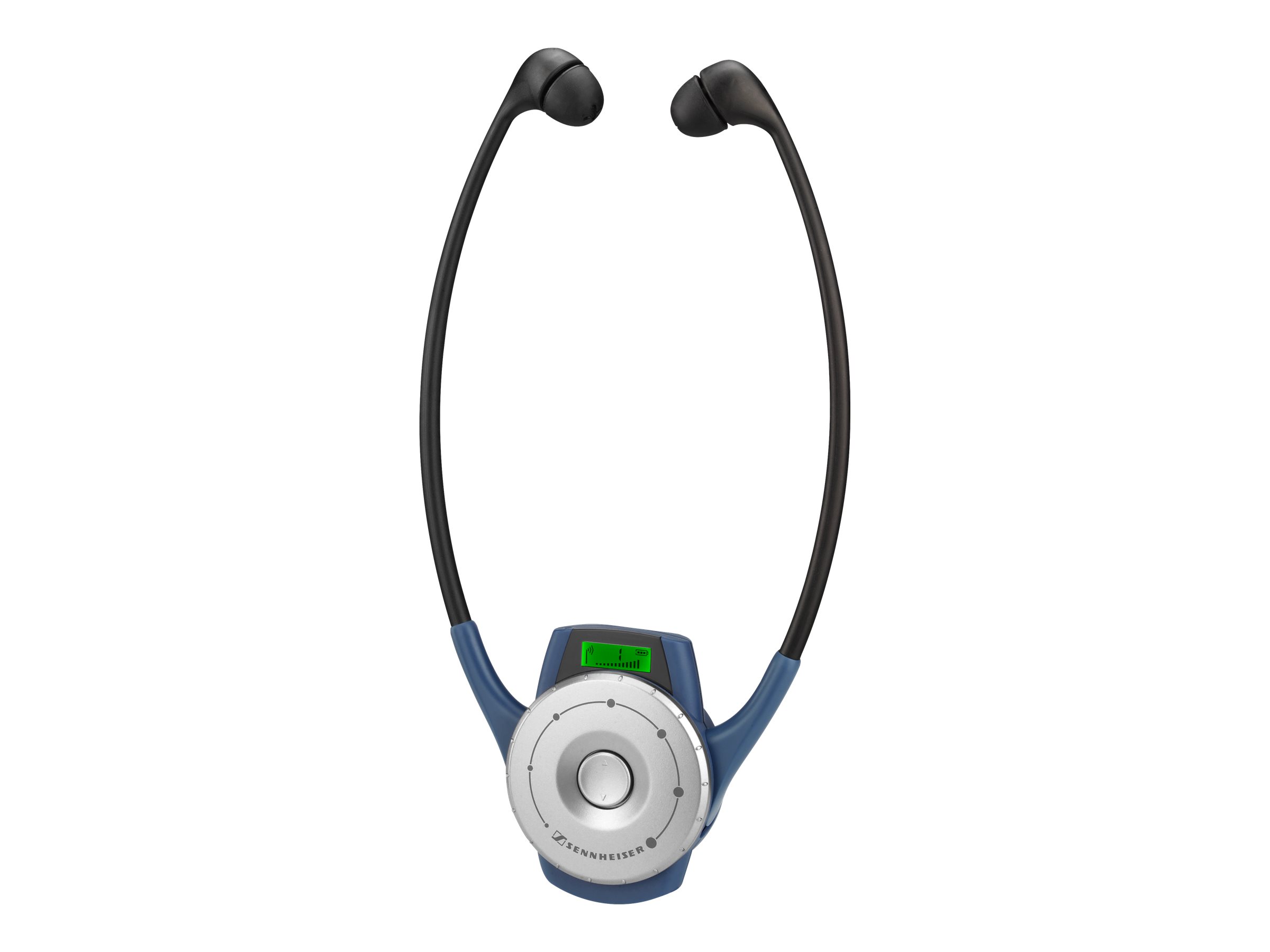
Complete technical specifications, details, expert ratings and review of Sennheiser HDE 2020-D-II. Find out how your chosen headphones stack up against the competition and whether they are the ones that best meet your expectations with the headphone comparison feature.
design and dimensions sound quality remote control battery and charging wireless link
| DESIGN AND DIMENSIONS Sennheiser HDE 2020-D-II |
|---|
| Product Type | Headphones - wireless | |
|---|---|---|
| Height | 24.5 cm | |
| Width | 12.5 cm | |
| Depth | 2 cm | |
| Weight | 73 g | Worse than 98 % of in-ear headphones rated. |
| Bluetooth Range (Operating Distance) | 100 m | Better than 97 % of in-ear headphones rated. |
The Sennheiser HDE 2020-D-II are wireless headphones. The wireless connection allows absolute freedom of movement and with that increases the comfort of using the headphones. This feature is very popular, especially when using headphones every day. The limiting factor of wireless headphones is a certain delay in the sound transmission between the source and the headphones (almost indistinguishable for a normal user), as well as the need to charge them (in the case of wired headphones, the headphones are recharged by connecting the cable itself). The maximum range of the headphones is up to 100 m. This range represents the distance from the sound source at which the headphones with wireless sound transmission can be used. However, the maximum range may be affected by obstacles such as walls or people, etc. The weight of the headphones is 73 g.
Show more| SOUND QUALITY Sennheiser HDE 2020-D-II |
|---|
| Headphones Form Factor | Under-chin | |
|---|---|---|
| Connectivity Technology | Wireless | |
| Frequency Response | 100 - 7000 Hz | Worse than 97 % of in-ear headphones rated. |
| Total Harmonic Distortion (THD) | 1.0% | |
| Sensitivity | 120 dB | Better than 98 % of in-ear headphones rated. |
The sound quality can be affected by many factors. When it comes to frequency range, the wider it is, the more detail you will hear when listening. However, the range a person can perceive is highly individual. The average person is able to perceive frequencies in the range of 16 to 20 000 Hz. So the most common frequency range you will see on the market is 20 to 20,000 Hz. Lower frequencies up to approximately 256 Hz are considered bass frequencies. Therefore, the lower the bottom value is, the better the headphones will reproduce bass. Conversely, values from approximately 2 048 Hz upwards are treble. That is why headphones with a high upper value will provide a much more accurate reproduction of high notes. Sennheiser HDE 2020-D-II offers a frequency range of 100 - 7000 Hz. The sensitivity parameter determines how sensitively the headphones can receive the signal from the source. The higher the sensitivity value, the louder the headphones will be able to play with less power consumption. In general, a higher listening volume also means a higher power load for the connected device. So if you're buying headphones to listen to music from your mobile phone, for example, this is relevant to think about as you don't want to drain your phone's battery too much. Lower values around 85 dB are more suitable for listening in more quiet environments (for example, at home or in the office). Medium values of around 90 dB can provide good listening quality in noisier environments (for example, on public transport or in cafés). Headphones with high sensitivity values of around 100 dB or more are designed for really noisy environments, such as concerts. The Sennheiser HDE 2020-D-II has 120 dB. Total harmonic distortion is one of the parameters you will come across and usually includes the average value of the distortion when reproducing all frequency bands. This parameter is not critical when choosing headphones, but it is important to remember that higher harmonic distortion can negatively affect sound quality. In case of these headphones, the total harmonic distortion is Audio Output | Total Harmonic Distortion.
Show more| REMOTE CONTROL Sennheiser HDE 2020-D-II |
|---|
| Controls | Volume |
|---|
| BATTERY AND CHARGING Sennheiser HDE 2020-D-II |
|---|
| Battery Type | 1 x headphone battery rechargeable - lithium polymer | |
|---|---|---|
| Battery Capacity | 830 mAh | Better than 99 % of in-ear headphones rated. |
| Battery Life | 8 hour(s) | Better than 73 % of in-ear headphones rated. |
| Included Qty | 1 |
These headphones have a battery capacity of 830 mAh. In terms of headphone battery life as a significant factor in the purchase decision, it depends on what you want to use the headphones for and potentially how often you will be able to recharge them. Headphones with up to a few hours of battery life are more suitable for home use as they will require more frequent charging. Headphones with a battery life of around 10 hours or more are already more suitable for commuting and shorter journeys. However, nowadays you can also find headphones on the market that have a battery life in the higher tens to hundreds of hours. In this case, you do not have to worry about your headphones simply running out of power on longer journeys, and you will not have to deal with constant recharging. The battery life of the Sennheiser HDE 2020-D-II reaches up to 8 hour(s).
Show more| WIRELESS LINK Sennheiser HDE 2020-D-II |
|---|
| Transmission Range | 100 m | Better than 98 % of in-ear headphones rated. |
|---|---|---|
| Radio Channel Qty | 8 | |
| Radio Frequency Range | 863 - 865MHz, 926 - 928MHz |
Similar Headphones
Other Sennheiser Headphones